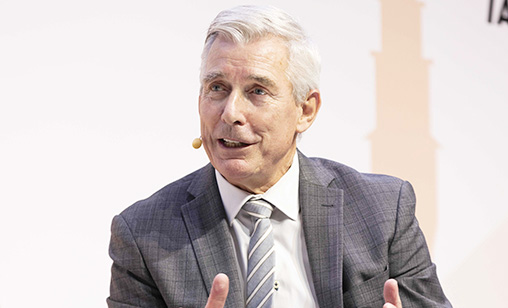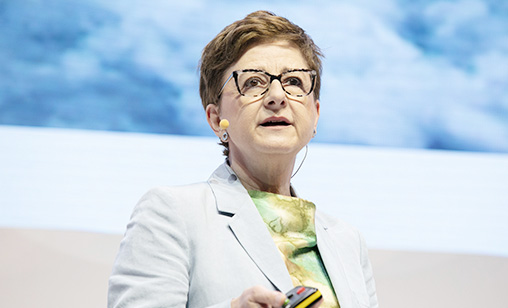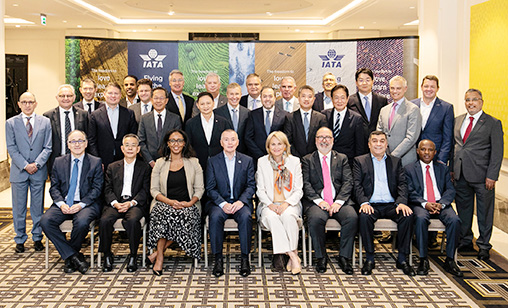Main Story
Industry must not be defeated by challenges to achieving 2050 net zero emissions
Safety will always be the airline industry’s number one priority. But sustainability and the drive towards net zero emissions by 2050 comes a close second and it dominated discussions at the International Air Transport Association (IATA) AGM and World Air Transport Summit in early June. The burning question for delegates? Is the target achievable?
June 1st 2023
The International Air Transport Association (IATA) may have released its most detailed plan yet for the airline industry to meet its 2050 net zero emissions target - a series of roadmaps covering all that must be done. Read More » but there is evidence many airline chiefs are not sure the goal can be achieved, while some are extremely pessimistic about the industry’s ability to hit the target.
In an interview with CNN’s Richard Quest at the association’s Istanbul AGM early this month, outspoken and often controversial Qatar Airways Group CEO, Akbar al Baker, went as far as describing the 2050 target as a “PR exercise”. He added: “Let us not fool ourselves. We will not even reach the targets we have for 2030, I assure you.”
 |
Al Baker insisted the industry’s targets are unrealistic, given the present volume of Sustainable Aviation Fuel (SAF) being produced and said airlines are “in denial” about the rate of progress in reducing emissions from flying.
“I’m not saying it can’t be done, but to do it in the (2050) time frame, the industry is far behind,” he said.
SAF is expected to be the key factor in achieving the industry’s net zero emissions goal. Currently, SAF production is less than 0.1% of the volumes global aviation needs to achieve its 2050 goal.
IATA director general, Willie Walsh, told AGM delegates the trend is positive, pointing to a tripling of SAF production last year, to 300 million liters (9 million gallons). SAF production must increase to 450 billion liters (117 billion gallons) by 2050 to achieve aviation’s net zero goal by 2050.
Other CEOs at the AGM were not nearly as pessimistic as al Baker on the subject, but nor were many of them totally confident the target could be reached. Taking part in a CEO “Insight Panel” at the summit, Air New Zealand CEO, Greg Foran, said he was not smart enough to be as definitive as al Baker.
“What I do know is: what other options are there? I am not prepared to give up at having a shot at something. I like the concept of having some ambition, putting a line in the sand and going for it,” he said.
 |
| 'We don’t have to be so definitive that if we don’t get there in this particular year that we are not prepared to extend it out. But at the same time, you have to be brave enough to have a go at these things' |
| Greg Foran Air New Zealand CEO |
Fellow panelist, Air India CEO, Campbell Wilson, conceded he did not know if the target could be reached. But he agreed with Foran. “It was very clear when the target was adopted that there would be requirements for technologies and other efficiency measures we would need to develop over time,” he said.
“We are investing in aircraft. It’s going to take many, many factors, SAF being one. But we have to try all of these things so clearly the objective of a more sustainable industry is a desirable one.”
In a separate briefing Cathay Pacific chairman, Patrick Healy, said the Hong Kong airline has a commitment to use 10% of its aviation fuel as SAF by 2030. “We were one of the first airlines to invest in SAF. We made an early investment in Fulcrum Bioenergy in 2014,” he said.
“There is an uptake agreement associated with it that will provide us with approximately 2% of the 10% of SAF we will need by 2030. We still have a long way to go to secure the remainder of the 10% - like everyone else. It is a challenging situation but it is something we must meet.”
IATA’s series of roadmaps, released at the AGM, are a critical element of the association’s efforts to help airlines along the sustainability road. They are the first detailed assessment of the key steps necessary to make net zero by 2050 an aviation success. They cover technology, infrastructure, operations, finance and policy.
While each category is necessary to meeting the 2050 target, finance is particularly important. IATA calculates a cumulative US$5 trillion will be needed for aviation to achieve net zero emissions by 2050. “They will, of course, evolve as we dig deeper and set interim milestones on the way to net zero,” Walsh said.
He also emphasized the roadmaps are not just for airlines. “Governments, suppliers and financiers cannot be spectators in this challenge. We all have skin in the game. And each must deliver the products, policies or investments needed to decarbonize,” he said.
“The roadmaps are a call to action to all aviation stakeholders to deliver the tools needed to make this fundamental transformation of aviation a success with policies and products fit for a net-zero world.”
| 'It would be wrong for us to try and convince people that this is going to be easy and it is going to be cheap. It is not. But the idea we can’t do it? No, I don’t accept that' |
| Willie Walsh IATA director general |
Separately, IATA’s Asia-Pacific regional vice president Philip Goh, called on airlines in the region to strengthen their readiness for transition to the SAF mandate. Government policies and incentives are crucial to encourage the scaling up of SAF production and the development of the SAF mandate in the Asia-Pacific. “It is not as fast as in other regions,” he said.
“Most airlines and governments in the Asia-Pacific are just starting their SAF journey. We work closely with stakeholders to collaboratively progress, including encouraging governments in the region to put in place policies to scale up the production and adoption of SAF,” Goh said.
The IATA roadmaps were not developed in isolation. A peer-to-peer review was conducted, complemented by modeling provided by the Air Transportation Systems Laboratory at University College London, to calculate emission reductions for each technology.
IATA’s senior vice-president sustainability and chief economist, Marie Owens Thomsen, explained the roadmaps show stakeholders where they should focus their efforts. “There are two certainties. By 2050, we need to be at net zero carbon emissions. And the steps to arrive there outlined in these roadmaps will evolve as the industry’s expertise grows,” she said.
 |
“Policy is particularly important early on as to a large extent it sets the scene for private sector investors to move. With that, the private sector can decarbonize at scale and with speed. Without the right policy incentives and bold investments, many of the technologies and innovations simply won’t happen at scale.
“Everything is related. It is why we have the five roadmaps. To tie all the parallel elements together and give our stakeholders, including governments, a complete understanding of everything that needs to happen.”
IATA media releases about sustainability dominated the AGM. As well as unveiling the roadmaps, the airline lobby group announced it had signed a Memorandum of Understanding with the United Nations Environment Programme (UNEP) to address sustainability challenges in the aviation industry. Making aircraft cabins more sustainable is a priority for airlines and their passengers, it said.
“The complex and asymmetrical regulatory environment, however, often is an obstacle by preventing circular economy best practices. In the absence of a global approach, differing regulations at both ends of a journey severely limit the actions that airlines can take,” it said. Already, IATA and UNEP are working on joint guidance on Re-thinking Plastics in Aviation.
| 'We do not want to miss that opportunity. Support from governments and value chain partners will be needed in this journey' |
| Philip Goh IATA Asia-Pacific vice president |
In another release, IATA announced its new partnership with ATPCO (Airline Tariff Publishing Company), a privately-held corporation that engages in the collection and distribution of fare and fare-related data for the airline and travel industry. ATPCO plans to create a new amenity that will use IATA CO₂ Connect data to help shoppers understand the carbon cost of various itinerary options.
SAF production, however, remains the major challenge. “Why are we not moving faster?” asked Walsh. “The willingness of airlines to use SAF is definitely not the issue. Every drop of SAF ever produced has been purchased and used.
“The problem is insufficient production capacity to meet demand. It is why we must increase the pathways for SAF production and diversify feed stocks while maintaining their sustainability credentials.
“Doing so will open production opportunities best suited to particular geographical locations. Governments should be jumping over themselves to be first in line for the job creation, local economic stimulus and biodiversity protection that SAF production brings - significant benefits for both developed and developing economies alike.”
Unfortunately, Walsh said, politicians have not made good on their promise to stop financing fossil fuels. “We have not seen a major shift of fossil fuel subsidies to green energy. Certainly not for SAF,” he said.
 |
Looking ahead, Walsh said the sustainability challenge is, bar none, the biggest aviation industry leaders will face. “This will be difficult and take time. As pioneers building the net zero emissions age for aviation, scrutiny of our efforts will be extreme,” he said.
“We must welcome it as a means of telling the impressive story of aviation’s decarbonization and its contributions to society. Last year, airlines transported goods valued at $8.5 trillion, supporting enormous economic opportunities.
“This year, we expect to safely enable 4.4 billion flyers to do business, reconnect with loved ones, explore our beautiful planet, fulfil something on their bucket list or expand their horizons.”
vincent grace says:
December 23rd 2024 08:00am